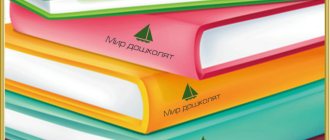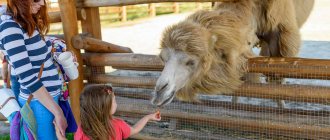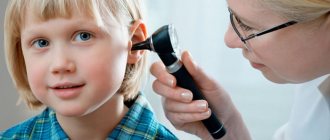Topic: “Words-signs”
Topic: Words denoting the attribute of an object.
Objectives: 1. To consolidate ideas about words denoting an object and the action of an object.
Introduce words denoting a feature of an object (which
questions are answered, their graphic representation). Learn to ask questions
words-signs, find them using questions. Improve skills
word formation. Enrich your vocabulary.
2.Develop articulatory, general, fine motor skills. Improve
mental processes: perception, attention, memory, thinking.
3. Nurture the moral and spiritual qualities of the individual through the ability to listen
interlocutor, work in cooperation (in pairs); ability to analyze
life situation, highlighting the moral side in the actions of the heroes.
Progress : I. Speech warm-up
- The one who repeats after me without errors the expression will sit down:
*Our guest took away our cane. * The crab made a rake for the crab. * There are pins on the counter, and needles on the shelf. *Thirty-three cars in a row, chattering, chattering.
*The Christmas tree has pinned needles.
II. Organizing time
Game "Tops and Roots"
(development of interhemispheric interactions of the brain)
- In some vegetables we eat what grows on the surface of the earth (tops), and in others - what is in the ground (roots).
- Raise your right hand, if the named vegetable contains the “top” for food; if the “root”, then your left hand:
cabbage, turnip, tomato, cucumber, potato, apple, pepper, zucchini, radish, carrot, banana, eggplant
III. Repetition of covered material
- Name any word that denotes an object. What question does it answer?
- Match your word with an action that this object can perform.
- Put a question from the word-object to the word action and vice versa.
IV. Main part
1. Familiarization with words denoting the characteristics of objects (game “Wonderful Bag”) - the student takes out the object apple.
-What do you have in your hands?
- Tell me, what color is it? size? taste? (the teacher puts words on the board)
-To the object - an apple,
we have selected words that represent the words of this subject.
-What did these words help us learn? (what kind of subject).
by analogy : pear, lemon
-What question did I ask you to find out about apple, pear, lemon?
(questions are put on the board).
-Today, we will work with words denoting the characteristics of objects.
2. Exercise “Choose words” (individual work)
-On your tables there are pictures of objects, with words-attributes of objects and questions for the words-attributes. You need to match your pictures with a question and attribute words that are appropriate to this subject. (examination)
Frontal speech therapy lesson in 2nd grade on the topic “Word signs”
Target:
• Acquaintance with the adjective as a part of speech • Selection of objects to characteristics and vice versa; • Ability to coordinate nouns with adjectives; • Form adjectives from nouns; • Development of logical thinking, visual attention, perception, fine motor skills.
Equipment: models of fruits, berries, a poster with a picture of a glass jar, a grandmother, a poster for describing objects according to the diagram, cards with the name of the jam.
Progress of the lesson
I. Org. Moment
One student stands at the board, with his back to the other children, the speech therapist shows an object picture, and the children must name only words that answer the question WHAT? WHICH? WHICH? For example, juicy, round, heavy, sweet - what is it? Having guessed, the child turns to the children, they show him an object picture (this is how they guess three more words - orange, carrot). The topic of the lesson is formulated: today we will talk about words that tell us about objects, naming their shape, color, size, smell, etc. - these are words-signs.
Poem about an adjective: I define objects, With me they are very noticeable. I decorate your speech. You need to know me, take care of me.
II. Main part.
1. Game "Magic Bag". The bag contains mock-ups of fruits. Children take turns determining by touch what kind of fruit it is; after guessing or taking it out of the bag, the child describes this fruit: • Round, ruddy, sweet D.: apple
Next, write down the phrase round, ruddy, sweet apple in a notebook.
• Yellow, sour, oval D.: lemon Write down the phrase Yellow, sour, oval lemon in your notebook.
• Blue, sweet and sour, oval D.: plum Write down the phrase Blue, sweet and sour, oval pear in your notebook. L.: What words helped us guess and name the fruit? How can you call them in one word? (signs) What questions did the sign words answer? (WHAT? WHICH? WHAT?)
2. Riddles
There is a basket with fruits and berries on the table. Children will have to guess riddles and take the guessed fruit from the basket.
Black berries are a dark bush, they taste good. (currant)
It grew in the south into a bunch of fruits, and in the harsh winter it will come to our home with raisins (grapes)
Under the velvet peel He hid his juicy taste (peach)
Yellow, citrus fruit It grows in sunny countries, But it tastes sour And its name is………… (lemon)
Red beads hang from the bushes looking at us. Children, birds and bears (raspberries) love these beads.
What kind of fruit tastes good and looks like a light bulb, its green side is warmed by the sun, it turns yellow and red? (pear)
Having taken a fruit or berry from the basket, the children go to the board and talk about their plant according to the diagram: Poster with a diagram by which you can name the shape, size, color, taste, smell, and what the object feels like.
3. Formation of adjectives from nouns
Game “Making jam with grandma” On the board are cardboard mock-ups of jars, a mock-up of grandma. The jars have a picture of berries attached to them (strawberries, raspberries, currants, blueberries, viburnum, strawberries)
The children need to help their grandmother “sign” the name of the jam on the jars. To do this, you need to correctly answer the question WHAT? (from blueberries - WHAT?, etc.) Having named the adjective correctly, the child attaches the word to the jar. Having “signed” all the jars, everyone writes down a sentence with their own word (Grandma made strawberry jam. Grandma made viburnum jam. Etc.)
4. Folding strawberries from paper (simple origami for children)
III. Bottom line
- What words did you become familiar with? - What questions do adjective words answer? - What did you like? What was difficult?
Crossword:
She gnawed golden nuts in a fairy tale. Tree with a white trunk. In the animated film his name was Gena. Chicken chick. An urban small bird with grey-brown plumage. Color.
Crossword solve the words horizontally and read the resulting word vertically. Match the guessed adjective word with nouns. WHITE- (about what you can say “white”) – hare, snow, sugar... WHITE- ribbon, chamomile, board... WHITE- cloud, blanket, window...
Author of the material: Kochetova Natalya Mikhailovna
Also on topic:
Dictionary program
Summary of a literacy lesson in the preparatory group “Words are signs of objects”
Lyudmila Baeva
Summary of a literacy lesson in the preparatory group “Words are signs of objects”
Purpose: to give the concept of words - names of characteristics of an object ;
grammatical questions to them ; develop vocabulary ;
*develop the ability to hear and listen to spoken words ;
*develop independence, friendliness, mutual assistance, and the ability to play in a team.
Equipment: subject pictures in envelopes, toys, 2 books with pictures of a sparrow, surprise box .
Progress of the lesson : Well, everyone - stood in a circle, everyone suddenly held hands, we will stand next to each other - answer questions. Let's start studying, we will try, Repeat, don't yawn, remember everything.
Game "Be careful"
- Guys, let's check if we are attentive? And some words will help us do this. Game conditions : You only need to clap on the action word :
Table, good, wash, watch, round, melt, revenge, try, dog, cat, jump, fluffy, sit. - What great fellows you are! Do you know how to play in a team?
Game “Imagine and Show”
Listen to the rules of the game : you need to split into 2 teams. The first team must come up with something and show it, the second team names the given object and its action . Word-object and word-action . For example: The plane is flying.
A story with elements of conversation.
-I have two books in my hands. I will read you two stories. Listen and tell me which story you like best and why.
Once upon a time there was a sparrow. It has paws, a head, a beak, and eyes.
Once upon a time there lived a small, agile sparrow. He has tiny paws, a round head, a sharp, short, black beak, and smart little black eyes.
-Which story did you like best?
— Why was the 2nd story more interesting?
-What are the words that helped make the story more interesting?
-Today we will get acquainted with new words that helped describe the sparrow. We will learn what these words and what questions they answer.
- What sparrow? Small, mobile. These words are called feature words .
- Why do we still need words-signs ? (to talk about the color, shape, size of the described object )
- Now let’s try to guess the object and give it a description with words-attributes .
Game "Guess the object ?"
In a closed box with cut-out side windows for hands, there are items . identifies this object by touch , names it, then takes it out and passes it around. Everyone must give one definition to this subject .
For example: the car is metal, red, heavy, clean, beautiful, etc.
- What questions do these words ? (What kind of car)
- What are these words ? ( sign words )
-Guys, there is another interesting game, also called “Guess the Object ”
.
I will name the characteristics of the object , and you can guess what or who I am talking about.
Who is this? Or what is it?
Big, brown, club-footed, shaggy (bear)
.
Long-eared, cowardly, fast (hare)
.
- Now try to make a riddle about an object , using only the words signs of the object , and the pictures that are on the table in the envelope will help you. Just don’t show this picture to anyone until the guys guess your riddle.
-Guys, another game awaits us : “Say the opposite”
. The game will be with a ball.
I will name the sign word , and you name the word with the opposite meaning.
For example: cheerful - sad.
Soft. High. ; Kind. ; Fast. ; Long. ; Hot. ; Silly. ; Brave. ; Dark. ; Smart. ; Bald. ; Young. ; Heavy. ; Wet.
Lesson summary
- What words did we learn today?
- What questions are answered by words-attributes of objects ?
- Well done. Thanks to all.



